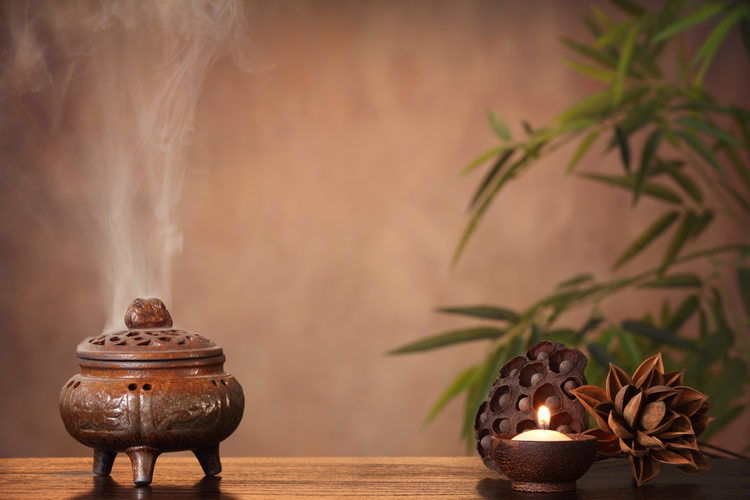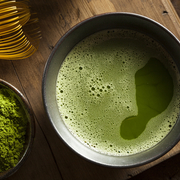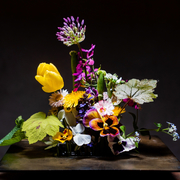“Kodo (incense ceremony)” is an art ceremony to appreciate sensitivity towards four seasons of Japan, Waka (traditional Japanese poem), historical facts, and scenery by incensing natural Koboku (fragrant wood).
It has very delicate and high sensitivity with more than 1000 years of history, which has been succeeded from the aristocracy in the Heian period(794-1192).
Nowadays, it has become less known, but Kodo is one of Japanese traditional art such as Sado (tea ceremony) and Kado (Japanese flower arrangement).
Let’s see the information about Kodo including its history and the etiquette, which may attract your interests.
“Kodo” as Japanese Unique Art
Kodo is one of Japanese traditional art such as Sado (tea ceremony) and Kado (Japanese flower arrangement), which requires the etiquette, manners and knowledge about classical literature. Above all, it is important to appreciate a scent itself.
There are two ways to enjoy “Kodo”; “Monko (literally, listening to incense)” and “Kumiko”, a game to guess what incense it is.
The expression of “listening” to incense is used for appreciating incense in Kodo, not “sniffing”.
As for the current Kodo, Kumiko is major, which is a game of distinguishing different types of incense by burning Koboku (fragrant woods).
While Kumiko is a game to distinguish incenses, it is not only about getting the right answer, but also about appreciating the atmosphere and the view of the world expressed by incense.
History of Kodo
1400 years ago, in the Asuka period(592-710), when the Buddhism was introduced to Japan, Koboku (fragrant woods) came to be used to burn as the part of the Buddhism ritual.
In the Heian period(794-1192), incense was separated from the Buddhism ritual and got sophisticated to an elegant game to listen to incense played at court by the aristocracy.

In the Kamakura period(1192-1333) it came to be enjoyed among samurai families, and in the Muromachi period(1336-1573), it developed as an art of the high class like the aristocracy and samurai families as Sado, Kado and Noh did.
Koboku at that time was as valuable as “one country” like Chaki (tea utensil).
Among the treasures at Todai-ji Temple Shoso-in Treasure Repoisitory, a large piece of Koboku called “Ojukuko” cut by Yoshimasa Ashikaga, the 8th Shogun of the Muromachi shogunate, and Nobunaga Oda.
This shows how valuable and sophisticated culture Kodo was among people at the high class in those days.
It is said that the main purpose of international trade by Shuin-sen (shogunate-licensed trading ship), which was started in the 1600s by Ieyasu Tokunaga, was to purchase “Kyara”, the selected natural Koboku, for Kodo.
In the middle of Edo period(1603-1867), it spread to wealthy merchants and townspeople, not only among the high class, and it became popular as Japanese unique culture up to today.
About Koboku used for Kodo
Do you know about “Koboku” mentioned earlier?
Koboku is a wood which gives off a comfortable incense in nature.
Among them, “Jinko” and “Byakudan” are representative.
Byakudan is known that it has an incense itself, but Jinko does not give off an incense as it is.
It gets solid by affording resin from a cut with bacteria on damaged bark of a tree.
This is discomposed slowly by bacteria to be Jinko.
As you see from this, Jinko is produced under special conditions of nature, so it has been well known that it is rare and expensive.

In “Nihon-shoki*”, where Koboku appeared for the first time, there is a story that Koboku washed ashore on Awaji-shima island in the period of Empress Suiko.
*Nihon-shoki: the oldest existing official history of Japan established in 720, the Nara period
三年夏四月、沈水、漂着於淡路嶋、其大一圍。嶋人、不知沈水、以交薪燒於竈。其烟氣遠薫、則異以獻之。
(In April, three years after accession, Jimu washed ashore on Awaji-shima island.
The size is one a person can hold.
Local people did not know it was Jimu and burnt it.
It gave off a beautiful incense far. As it was rare, Jimu was offered to the court.
Quoted from 22nd volume of Nihon-shoki / Empress Suiko (592-628)
“Jimu” refers to “Jinko” with a plenty of resin, which is heavy enough to sink in water.
It was written that “local people burnt it and it gave off a beautiful incense, so it was offered to the court.”
From this, Koboku had been valuable enough to be offered to the court in the Nara period, when “Nihon-syoki” established.
In Kodo, the differences of incenses are described in 5 flavors; “sour”, “bitter”, “sweet”, “spicy” and “salty”.
In addition, there are 6 divisions under a production area of Koboku such as;
1. “Kyara”
2. “Rakoku”
3. “Manaban”
4. “Manaka”
5. “Sasora”
6. “Sumotara”
Thus, grouping of incenses is organized by Rikkoku-Gomi (literally, 6 countries 5 flavors).
How to Burn Koboku
Before you try genuine Kodo, it is recommended to enjoy incenses of Koboku for yourself.
Here is a casual way to burn Koboku without many tools.
P urchase Koboku
There is an expensive Koboku with the price from tens of thousand to hundred of thousand.
It is recommended to try with a trial kit aound 8,000 yen for casual use.
U se Electric Incense Burner
By using an electric incense burner cost 12,000-24,000 yen, you can enjoy incenses only by putting Koboku on an electric heater without charcoal nor ashes.
Adjustment knob on a heater can set the most appropriate temperature for each Koboku.
T ry “Soradaki”
Soradaki is the way to burn Koboku by using Kikikoro, Korotan, and Kotan.
1. Put fire on Kotan
2. Put Korotan in Kikikoro and bury fired Kotan to heat ashes (5 minutes)
3. Put Koboku on heated ashes
Detailed process is introduced in the movie below.
*Available in Japanese
Summery
Nowadays, Kodo is not that well-known, but it has a very long history.
We hope you feel charm of Kodo.
Although Japanese traditional art tends to be seen as “too hard to try”, you do not always need to purchase expensive ones.
Everyone can try easily, and at the same time, you can pursue its essence as far as you would like.
Why don’t you step into the world of Japanese traditional incenses as one of your hobby to enrich your life over time?







